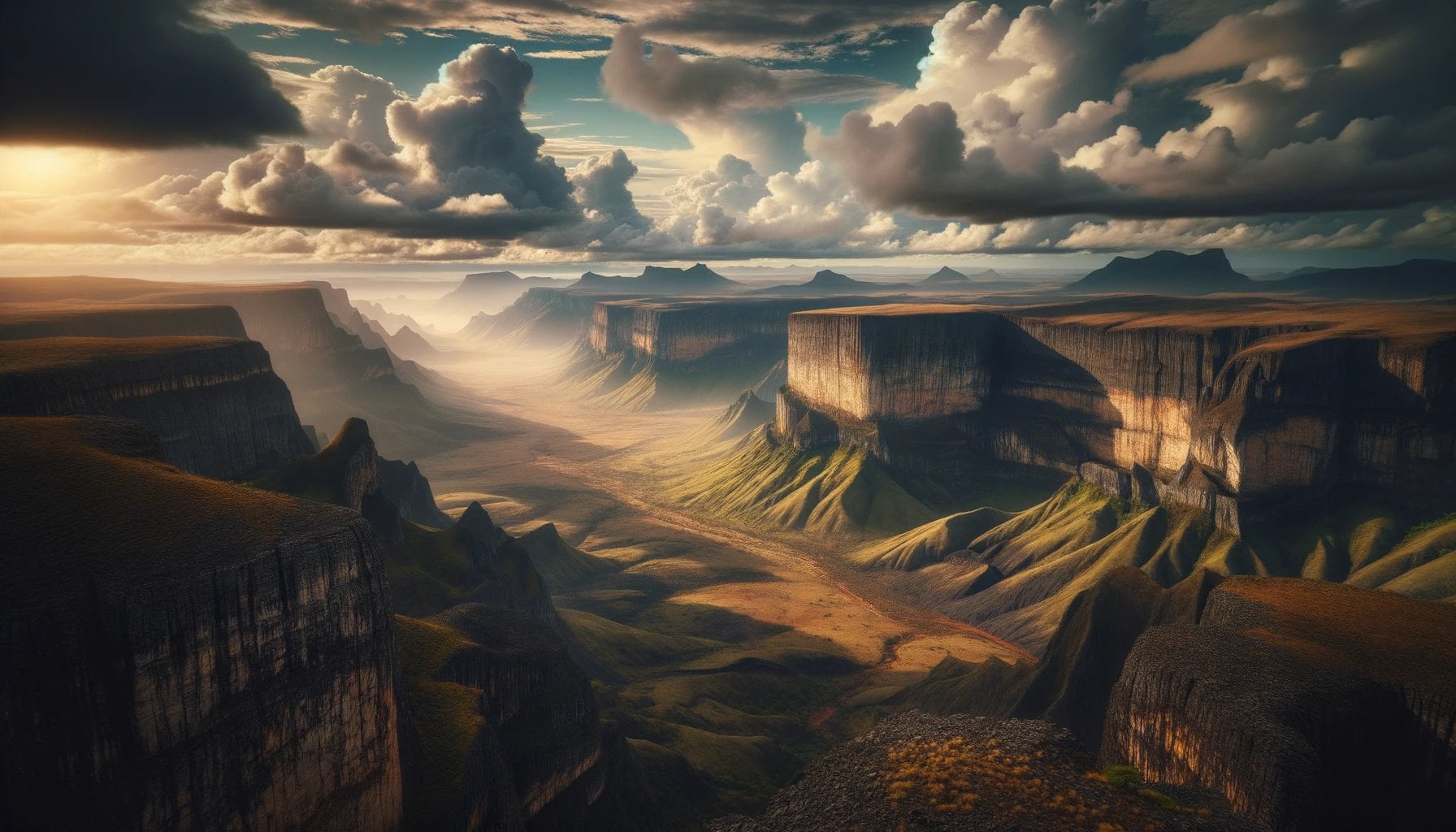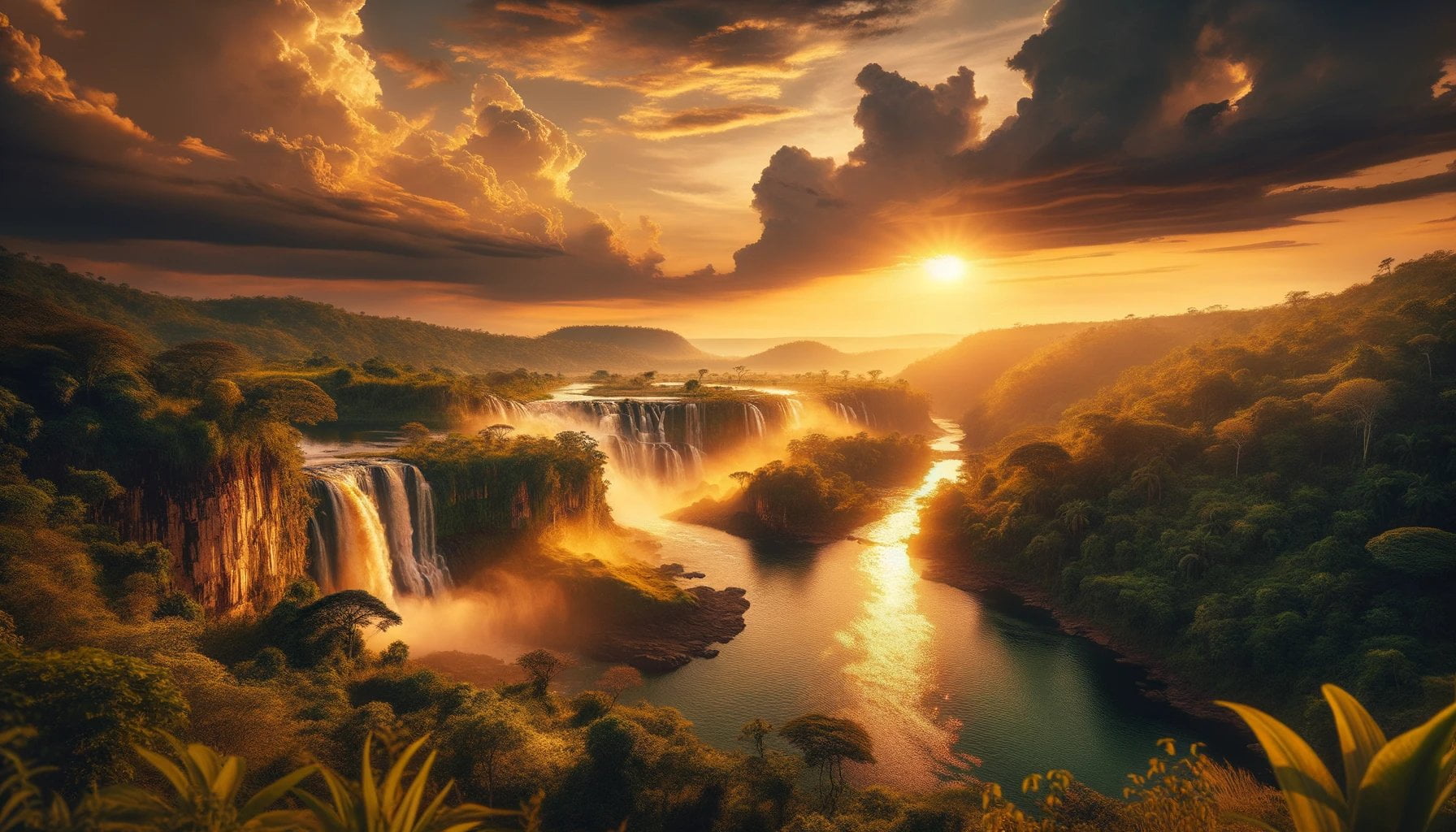Embark on a captivating journey through Angola’s hidden gems as we explore the famous places that make this African nation truly remarkable. From ancient historical sites to breathtaking natural wonders, this article unveils the treasures of Angola, inviting readers to immerse themselves in the country’s awe-inspiring heritage. With a keen focus on sustainable tourism and a knack for storytelling, we delve into the cultural, historical, and natural aspects of these renowned attractions, igniting a sense of curiosity and wanderlust in all who read this article. So join us as we embark on this exploration of Angola’s famous places that are waiting to be discovered.

Key Takeaways:
- Angola is a country in Southern Africa that offers a diverse range of famous landmarks and natural attractions.
- Kissama National Park, located south of Luanda, is a popular destination known for its stunning natural settings and wildlife conservation.
- The Tunda Vala Fissure, situated between Lubango and Namibe, offers breathtaking panoramic views of the surrounding landscape from its elevated position.
- Dilolo Lake, the largest lake in Angola, attracts visitors with its scenic beauty and peaceful atmosphere in Moxico.
- The Dala Waterfalls, standing at 60m high, create a spectacular scene with mist and spray, making it a must-visit destination for nature enthusiasts.
- Angola presents a variety of attractions, including historic sites, cultural landmarks, wildlife, and picturesque landscapes, providing something for every traveler.
Famous Places in Angola
Angola, a stunning country located in Southern Africa, boasts a myriad of famous landmarks and natural wonders that are waiting to be discovered. From wildlife sanctuaries to breathtaking landscapes, the diverse attractions in Angola will leave any traveler in awe. Let’s explore some of the most renowned places to visit in this extraordinary country.
Kissama National Park
Location: Just 70km south of Luanda.
Kissama National Park is a true gem nestled in Angola’s heart. As a wildlife sanctuary, it serves to conserve and protect various African species, offering visitors a chance to witness the continent’s magnificent fauna up close. The park’s breathtaking natural settings make it an irresistible destination for nature enthusiasts and avid photographers alike. Imagine being surrounded by vibrant wildlife while immersing yourself in the tranquility of the sprawling landscapes. Kissama National Park showcases the raw beauty of Angola.
Tunda Vala Fissure
Location: Between the cities of Lubango and Namibe.
Prepare to be captivated by the mesmerizing Tunda Vala Fissure, a natural wonder that will leave you speechless. Perched at an elevation of 2,600m above sea level, this incredible sight offers panoramic views of the surrounding landscape. One can’t help but marvel at the vastness and grandeur of Angola’s natural beauty from this vantage point. Picture yourself standing amidst the clouds, gazing at the splendor of the sprawling valleys below. Tunda Vala Fissure is a testament to the country’s awe-inspiring geography.
Dilolo Lake
Location: Moxico, eastern Angola.
Hidden away in the eastern part of Angola lies the magnificent Dilolo Lake, the largest lake in the country. Its scenic beauty and tranquil atmosphere make it an important tourist spot. Imagine taking a serene boat ride across the vast expanse of the lake, surrounded by lush greenery and serenaded by the sounds of nature. Dilolo Lake offers a respite from the bustling world, allowing visitors to reconnect with the peacefulness of untouched landscapes. Lose yourself in the serenity of Dilolo Lake.
Dala Waterfalls
Prepare to be enchanted by the ethereal Dala Waterfalls, a true paradise for nature lovers. Cascading from a soaring height of approximately 60m, these majestic falls create a spectacle of mist and spray that fills the air. As you stand in their presence, you’ll feel an intimate connection with nature’s raw power and beauty. The Dala Waterfalls offer a captivating experience that will leave an indelible mark on your memory.
These are just a glimpse of the incredible famous landmarks that Angola has to offer. From natural wonders to historical sites and cultural landmarks, Angola has something that will pique the interest of every traveler. Whether you seek awe-inspiring landscapes, unique wildlife encounters, or a deep dive into the country’s rich heritage, Angola is waiting to be explored.
Conclusion
Angola’s famous places beckon adventurers from far and wide. The country’s stunning vistas, diverse wildlife, and captivating cultural sites make it a must-visit destination for any travel enthusiast. So pack your bags, embrace the unknown, and embark on a journey to uncover Angola’s hidden gems. Let the wonders of this remarkable country leave an indelible mark on your heart and soul. Get ready to create memories that will last a lifetime in Angola, a true haven for explorers.
Here are some interesting facts about Angola that you might not know yet. Did you know that Angola is known for its rich cultural heritage? From traditional music and dance to vibrant festivals, Angola’s culture is truly captivating. If you want to learn more about Angola’s culture, click here to explore further.
Angola is not just known for its culture, but also for its fascinating history. From colonial times to independence, the country has gone through significant transformations. Delve into the intriguing history of Angola by clicking here and discover the stories that shaped this nation.
Are you a food lover? Then you don’t want to miss out on Angola’s delicious cuisine. With influences from Portuguese, African, and Brazilian flavors, Angola’s culinary scene is a true sensation. Treat your taste buds to the flavors of Angola by clicking here to explore the country’s gastronomic delights.
If you’re planning a trip, Angola’s tourism has plenty to offer. From stunning natural landscapes to vibrant cities, there’s something for everyone to enjoy. Get ready to embark on a thrilling adventure through Angola’s tourism wonders by clicking here and discover the hidden gems that await you.
So, are you ready to uncover the fascinating facts about Angola? Click here to dive into a world of discovery and learn more about this incredible country.
Discovering the Rich History and Architecture of Luanda
Luanda, the capital city of Angola, is a destination that offers a rich history and stunning architecture. From historical landmarks to cultural attractions, there is a lot to explore in this vibrant city.
Exploring Luanda’s Historical Landmarks
One of the must-visit attractions in Luanda is the Fortaleza de São Miguel. Built in 1634, this landmark reflects the city’s rich history and served as a defense fortress during the colonial period. The fort offers a glimpse into Luanda’s past and provides panoramic views of the city.
To further explore the history of Angola, a visit to the National Museum of Slavery is highly recommended. The museum sheds light on the country’s dark past and the transatlantic slave trade. It features exhibits that depict the experiences of enslaved Africans and provides a somber reminder of Angola’s history.
For religious history enthusiasts, the Igreja da Nossa Senhora dos Remedios is worth a visit. This historic church dates back to the 16th century and showcases beautiful colonial architecture. It is a significant religious site in Luanda and offers a serene atmosphere for reflection and worship.
Architectural Marvels in Luanda
When visiting Luanda, it is also worthwhile to explore the city’s architecture. The colonial influence is evident in the unique architectural styles found throughout the city. The impact of Portuguese colonial control is particularly noteworthy. The architecture of Angola spans three distinct historical periods: precolonial, colonial, and independent. The country’s architectural legacy reflects its complex past.
Where to Find More Information
To learn more about the rich history and culture of Luanda, interested individuals can refer to the following sources:
- Best Pub Crawl provides information on Luanda’s famous sightseeing attractions^1^.
- Wikipedia: Luanda offers an overview of Luanda’s history, geography, demographics, and more[^2^].
Key Takeaways:
- Luanda is home to historical landmarks that showcase the city’s rich history.
- The Fortaleza de São Miguel offers panoramic views and a glimpse into Luanda’s past.
- The National Museum of Slavery sheds light on Angola’s history of the transatlantic slave trade.
- The Igreja da Nossa Senhora dos Remedios is a significant religious site with beautiful colonial architecture.
- Luanda’s architecture reflects the impact of Portuguese colonial control and spans three distinct historical periods.
- Interested individuals can find more information on Luanda’s history and attractions through Best Pub Crawl and Wikipedia.
[^2^]: Wikipedia: Luanda
Unveiling the Natural Beauty of Kissama National Park
Kissama National Park, situated in the southwest of Angola, is a hidden gem just waiting to be explored. Spanning approximately 9,600 square kilometers, this park is the largest in Angola and offers a captivating blend of diverse wildlife, breathtaking landscapes, and a rich historical background. Let’s dive into the fascinating world of Kissama National Park and uncover its natural wonders.
Location and Entrance Fee
Kissama National Park is conveniently located in the northwestern part of Angola, along the coastline. To access the park, visitors can simply head 2 km after crossing the river Kwanza via the bridge, which serves as the park’s northern border. It’s important to note that there is an entrance fee of 2500 AOA (15 USD) per person.
Safari Experience
For an unforgettable safari experience, Kissama National Park offers game drives that begin bright and early at around 7:00 AM. To ensure a timely arrival and avoid city traffic, it’s advisable to wake up early and embark on this exciting adventure. The game drive fee is 4000 AOA (24 USD) per person, granting you the opportunity to spot wildlife in their natural habitat.
Kissama Lodge
Within the park, you’ll find the charming Kissama Lodge. Despite rumors of its poor conditions, this lodge is actually well maintained and provides various amenities such as a bar, a pool, and a breathtaking view of the surrounding area. It’s the perfect place to relax and immerse yourself in the natural beauty that Kissama National Park has to offer.
History of Kissama
Dating back to 1938, Kissama National Park was initially established as a hunting reserve and later became a National Park in 1957. However, during the 30 years of war, the park suffered significant losses in its wildlife population as many animals were killed. Despite these challenges, the park has made commendable efforts towards conservation and restoration.
Wildlife and Vegetation
While Kissama National Park may not compete with renowned African parks like Kruger, Chobe, or Etosha in terms of wildlife abundance, it still boasts a variety of enchanting animal species. Keep your eyes peeled for magnificent elephants, graceful water buffalo, rare indigenous palanca antelopes, and even nesting sea turtles. The park’s diverse vegetation is also a treat for nature enthusiasts, providing a picturesque backdrop to your adventure.
Key Takeaways:
- Kissama National Park in Angola is a hidden gem waiting to be discovered.
- The park offers game drives starting at 7:00 AM, giving visitors a chance to experience wildlife in its natural habitat.
- Kissama Lodge, located within the park, offers comfortable amenities such as a bar, a pool, and picturesque views.
- The park has a rich history, evolving from a hunting reserve in 1938 to a National Park in 1957.
- While the wildlife population in Kissama National Park is still recovering, it is home to elephants, water buffalo, palanca antelopes, and nesting sea turtles.
- The park’s diverse vegetation adds to its natural beauty.
Sources:
Experiencing the Cultural Heritage of M’banza-Kongo
M’banza-Kongo, also known as São Salvador do Congo, stands as a testament to the political and spiritual significance of the Kingdom of Kongo. As you step foot in this historic city in northwestern Angola, a world of cultural heritage awaits, transporting you back to a time when mighty kingdoms ruled the African continent.
Unveiling the Historical Splendor
At an altitude of 570 meters, M’banza-Kongo perches gracefully on a plateau, preserving remnants of its rich past. This UNESCO World Heritage Site served as the capital of the Kingdom of Kongo for centuries, until its abolition in 1915. Despite a brief period of abandonment during civil wars in the 17th century, the city has managed to retain its historical significance.
Exploring the Cultural Heartbeat
The cultural heritage of M’banza-Kongo pulsates through its streets, inviting visitors to unravel its stories and immerse themselves in the traditions of the central Bantu peoples. As the city holds semidivine status to its kings, it stands as a symbol of Angola’s captivating cultural origins. From the vibrant sounds of local music and dance to the mesmerizing rhythms of traditional ceremonies, M’banza-Kongo offers a gateway to the soul of Angola.
Embarking on a Journey of Discovery
As you venture into the heart of M’banza-Kongo, you’ll encounter vestiges of history that will leave you awestruck. Pay a visit to the royal chamber, where the King once received his esteemed guests. Walk through the city’s streets, lined with architectural wonders that reflect the influence of Portuguese colonialism. Feel the weight of history as you stand in the midst of an ancient kingdom.
Preserving the Heritage for Future Generations
Recognizing its significance, M’banza-Kongo has been promoted as the National Cultural Heritage of Angola, ensuring its preservation for generations to come. By exploring this iconic destination, you contribute to the promotion of sustainable tourism and the safeguarding of Angola’s rich heritage.
Key Takeaways:
- M’banza-Kongo, also known as São Salvador do Congo, is a city in northwestern Angola and served as the political and spiritual capital of the Kingdom of Kongo.
- The city is located on a plateau at an altitude of 570 meters and became a UNESCO World Heritage Site in 2017.
- M’banza-Kongo holds significant cultural heritage, representing the central Bantu peoples’ traditions and the ancient Kingdom of Kongo.
- Visitors can explore historical remnants, including the royal chamber where the King received his guests.
- By experiencing the cultural heritage of M’banza-Kongo, tourists contribute to the preservation of Angola’s rich history and support sustainable tourism.
Encyclopaedia Britannica – M’banza Congo
UNESCO World Heritage Centre – Mbanza Kongo

FAQ
Q1: Where is Kissama National Park located?
A1: Kissama National Park is located in the southwest of Angola, along the coast.
Q2: What is the entrance fee for Kissama National Park?
A2: The entrance fee for Kissama National Park is 2500 AOA (15 USD) per person.
Q3: What is the game drive fee at Kissama National Park?
A3: The game drive fee at Kissama National Park is 4000 AOA (24 USD) per person.
Q4: What is the history of Kissama National Park?
A4: Kissama National Park was initially created as a hunting reserve in 1938 and later became a National Park in 1957. It experienced a decline in wildlife population during the 30 years of war.
Q5: What wildlife can be found in Kissama National Park?
A5: Kissama National Park is home to a variety of wildlife including elephants, water buffalo, indigenous palanca antelopes, and a population of nesting sea turtles.
- Star Ring Trends: Etsy vs Amazon - March 28, 2025
- Boost Pollinator Habitats: Baby Blue Eyes Sustainable Farming Guide - March 28, 2025
- Protect Big Black Bears: Effective Conservation Strategies - March 28, 2025
















